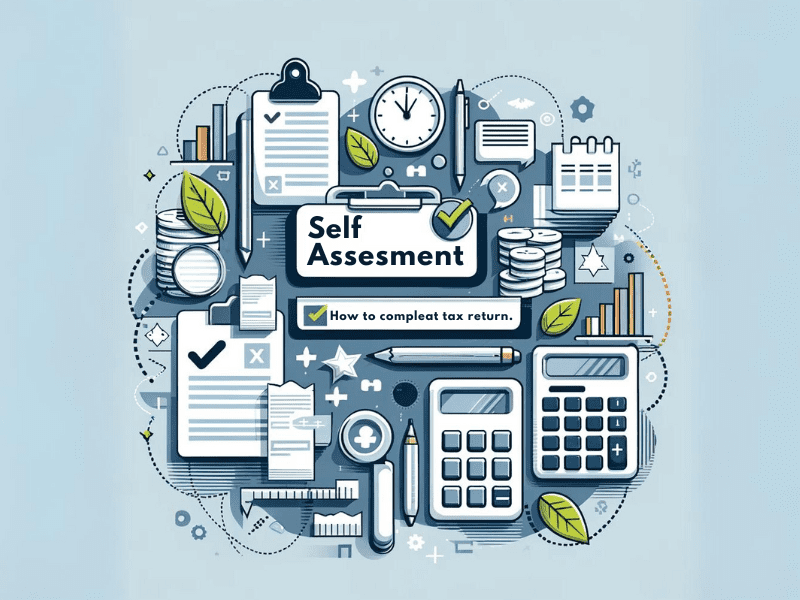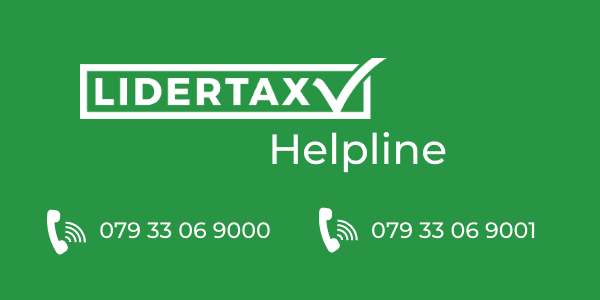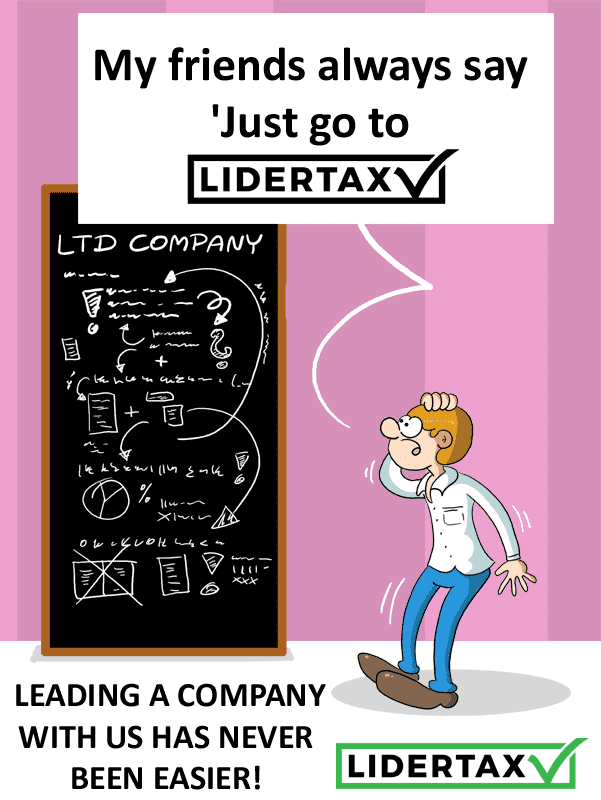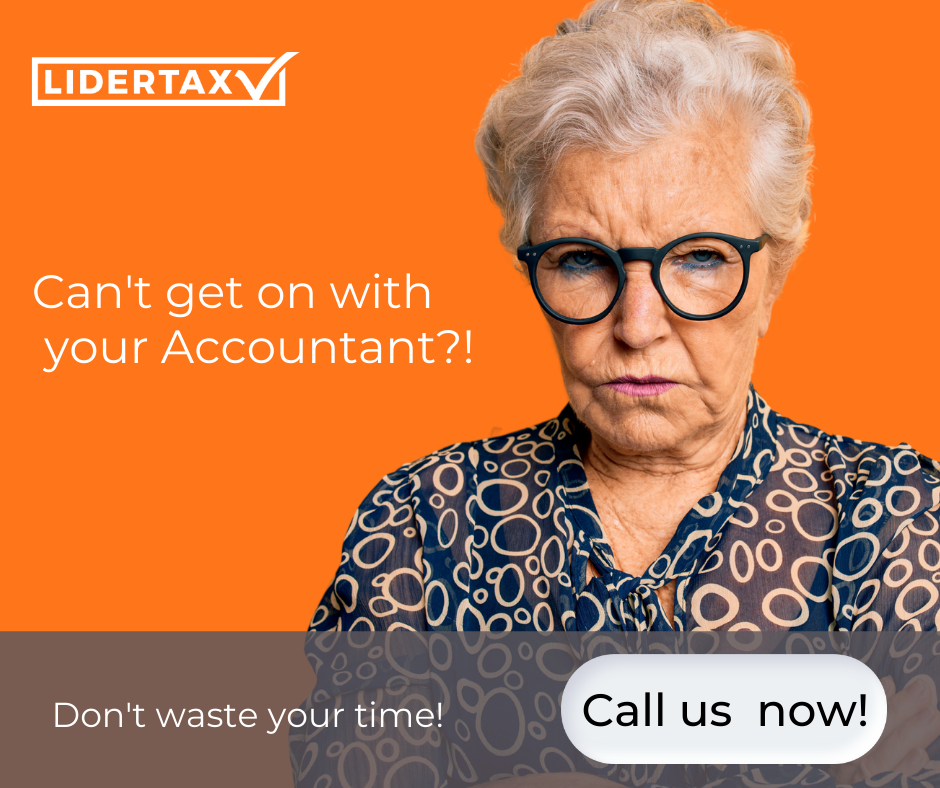
Have you ever wondered about how to submit your self assessment tax returns? Submitting self assessment personal tax returns can seem a little complex, but this shouldn’t have to be the case. Fortunately, there are plenty of options to help with tax return preparation; in line with this, today’s quick guide outlines some of the core things you should keep in mind when submitting! But, if you find yourself in need of further guidance or support, our friendly self assessment experts can help.

Self Assessment Tax Return Tips You Should Know
If submitting your self assessment has left you feeling a little overwhelmed, don’t panic. The following nine tips could help streamline your personal tax return preparation! After all, once you know what you’re doing, submitting personal tax returns becomes a breeze.
#1 Keep Records Year Round
One of the most important tips for your self assessment tax returns is to keep records year-round. Indeed, it can be tempting in many cases to leave your self assessment to the last minute. However, this may complicate matters significantly.
Sometimes, finding out your year’s income and expenses in hindsight can be relatively simple. For example, if you only handle payments through one bank account, this should all be recorded already. However, as soon as you start using multiple payment channels (e.g., PayPal or cash), tracking income and expenses becomes tougher.
As such, keeping records year round can make a huge amount of difference in your self assessment. This can save hours running around trying to find invoices and records of different transactions. In turn, this can make it easier for you to compile all of the income and expenses when completing returns.
It’s important to note here that submitting your tax returns incorrectly can come with fines, even if an honest mistake. As such, avoiding these accidents by keeping year round records is something we cannot stress highly enough. Fortunately, there are plenty of different accounting software options on the market. These can make tracking your income and expenses far more straightforward, so you may want to consider investing in these.
#2 Decide How to Submit: Digitally or On Paper
One of the most important things you’ll need to keep in mind when planning your self assessment tax return is the submission method. Indeed, everyone has their personal preferences for how to submit their personal tax returns. Nonetheless, whether you choose to submit your return digitally on paper will have a huge role in your preparation.
These days, most people will typically submit a digital self assessment tax return. However, you can print out paper copies and post these to the HMRC directly, if you wish. With that being said, this can have a great impact on deadlines.
If you decide to submit your personal tax returns on paper, keep in mind that you’ll have less time. The deadline for paper submissions is October 31st following the end of the tax year. This potentially only gives you a few months to finalise your tax return after the conclusion of the tax year.
Alternatively, you can consider submitting your tax return digitally. Digital tax return submissions have a longer deadline, until the 31st January. This gives you another two months to complete your tax return preparation. As such, if you’re likely going to be pushed for time, completing a digital tax return may be better suited.
Of course, if you do attempt to complete a paper tax return and miss the deadline, you have a backup. So, worst-case scenario, don’t hesitate to switch to digital, even if you normally do paper submissions.
#3 Apply for a Unique Taxpayer Reference Number Early
One common challenge that people face when submitting their tax returns is leaving it to the last minute. However, this can put you at significant risk of missing the self assessment deadline. Why risk it?
If you have not completed a self assessment before, you’ll need to apply for a unique taxpayer reference number. These are easy to apply for, but it can take a while for them to come through. You won’t be able to begin your self assessment tax return until you’ve got yout unique taxpayer reference number; thus, we strongly recommend that you take care to ensure that you have applied for this with time to spare.
Once you have gotten your unique taxpayer reference number, you’ll need it each time you complete a self assessment. As such, you should keep a record of this number in a safe place to ensure that you don’t accidentally end up losing it. If you do lose the number, you can always reapply for your number to be sent out again; however, this comes with the same sort of delay as usual.
#4 Understand What Income You Need to Complete Self Assessment For
You won’t necessarily need to complete a self assessment tax return for all of your income. Indeed, if you have any form of employed income, this will already be taxed through the PAYE system. As such, self assessment is applicable for self-employed earnings and some other investments. Keeping these in mind can help you recognise which income sources you’ll need to submit an assessment for.
Some of the main income sources that are taxed using the self assessment system include:
- Earnings from sole trader and partnership businesses
- Savings, dividend, and investment income
- Rental property income
- Tips and commissions
- Foreign income
These are just a few examples of income you may need to complete self assessment for. As such, if you’re unsure, you may want to get professional help to ensure you’ve included everything.
With that being said, while any employed income will be taxed through PAYE, this will still be taken into account. The main influence of employed earnings when completing your self assessment is your tax bracket. Indeed, your tax bracket is determined based on your total income, not just self-employed or employed earnings. Thus, if you made £30,000 in employed work and £30,000 self-employed, part of your self-employed income would still fall into the higher tax bracket.
#5 Learn the Tax Brackets
Not all income is taxed in the same way. In line with this, understanding the different tax brackets is important to help you plan for your tax bill. In addition to the basic £1000 trading allowance, for 2023, the tax brackets are as follows:
- Personal allowance: Income of up to £12,570 is untaxed.
- Basic rate tax: Earnings above £12,570 and £50,270 are taxed at 20%.
- Higher rate tax: Income above £50,270 and £150,000 is taxed at 40%.
- Additional rate tax: Earnings over £150,000 are taxed at 45%.
This can have a significant impact on your tax bill. For example, if you earned £15,000, you’d only pay tax at a basic rate of £2,430. However, if you earned £51,000, your tax bill would be calculated as follows:
- Personal allowance (untaxed) of £12,570.
- Basic rate tax bill of £7,540 (20% of £37,700).
- Higher rate tax bill of £292 (40% of £730).
In total, this would take your tax bill to around £7,800. Understanding this can help you prepare throughout the year for the tax bill; indeed, if you haven’t set aside money in the business throughout the year, the bill can be quite a shock!
#6 Make Sure to Claim All Allowed Expenses
Many people miss out on claiming the expenses they are entitled to. This simple mistake can potentially leave you paying much more in tax than you may have realised. Ouch! As such, we strongly recommend brushing up on your knowledge of what you can claim for. Often, accounting for all of these expenses is not only a requirement, but this could save you a huge sum.
Some of the main expenses that you should consider (that many people overlook) include:
- Office supplies and stationary
- Phone and internet bills
- Rental payments and business rates
- Utility costs
- Maintenance and repair bills
- Transport costs (for some types of necessary travel)
#7 Consider Expenses You Cannot Claim For
Claiming for all of your business’s allowed expenses is vital. However, if you claim expenses that are not allowed, you could find yourself facing potentially significant fines. As such, be sure to check this carefully. It’s also worth noting that this may depend on how you manage your accounting; traditional accounting differs significantly from cash basis accounting.
For example, with cash basis accounting, you only pay tax on money that is received during the accounting period. With this, you can claim some office equipment, such as computer hardware, as expenses. However, under traditional accounting, these may need to be claimed as capital allowances.
#8 Understand How Time to Pay Works
If you get caught out and you can’t afford your self assessment tax bill, it’s easy to feel overwhelmed. However, don’t panic; there are options you can consider. One of the main things you might want to look at here is the Time to Pay scheme.
Time to Pay is a tax repayment scheme offered by the HMRC that allows you to set a payment plan. Thus, instead of paying the complete tax bill in one go, you can split this over several months. However, it’s worth noting that you’ll need to have no outstanding returns with HRMC for this to apply.
If you think that the Time to Pay Scheme might help you, you could contact HMRC to find out more. This scheme is open for up to £30,000 in outstanding tax. As such, for the vast majority of businesses, this can potentially cover a large amount of the tax bill.
#9 Hire an Accountant to Make Self Assessments Easier
At the end of the day, completing a self assessment tax return can be frustrating. Even when you have all of your income and expenditure in one place, compiling this and completing the return can nonetheless take a lot of time. As such, it’s perhaps no surprise that many people choose to hire an “accountant near me” instead.
Generally speaking, around three quarters of businesses will seek the support of an accountant in a given year. As such, if you think that your local accountant may be able to help, it’s well worth reaching out. You might just find that this takes all of the pressure off during those pivotal pre-deadline weeks.
Self Assessment – Final Thoughts
If you’ve been struggling with your tax returns, don’t panic; there’s help out there. So, once you’ve gone through today’s key tax return preparation tips, don’t hesitate to contact your local “accountant near me.” They should be able to offer more personalised help and support for your own self assessment tax return. So, you can go about your day as normal, knowing that everything’s being handled by the experts!




